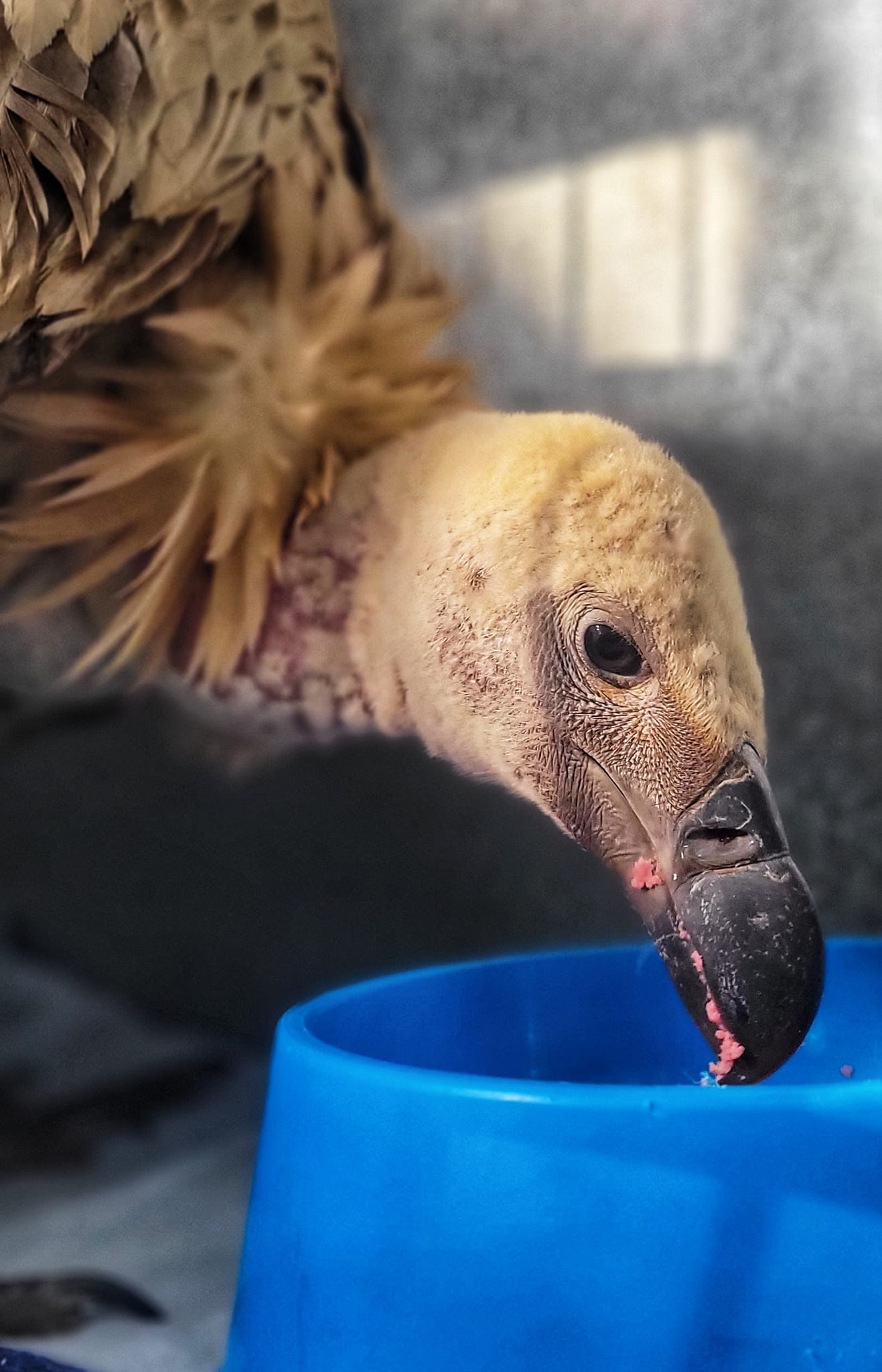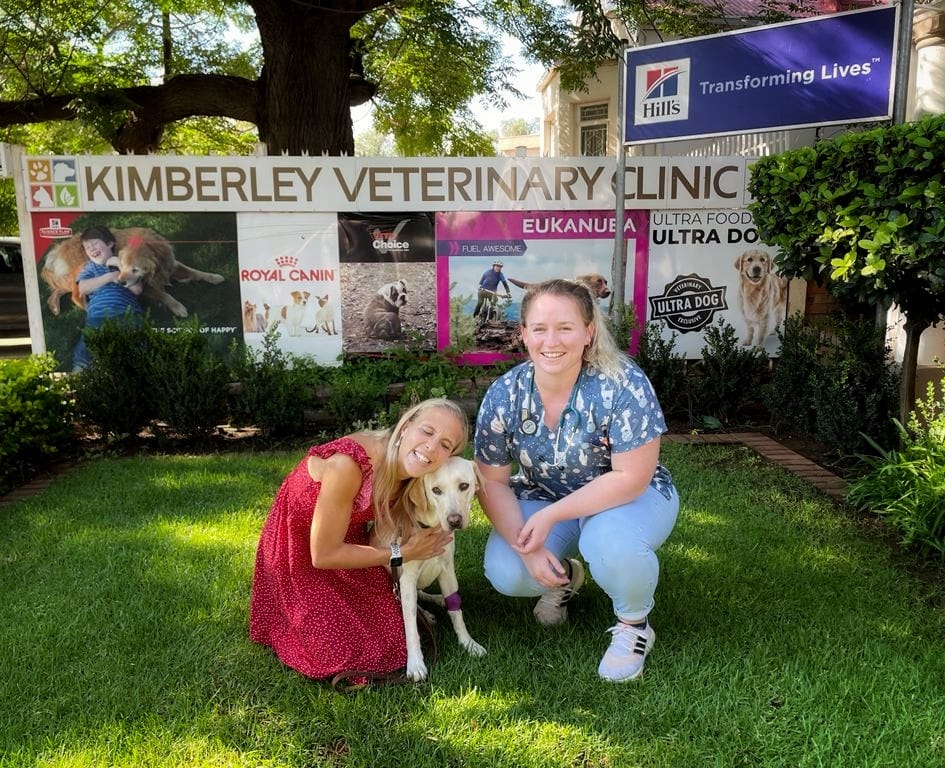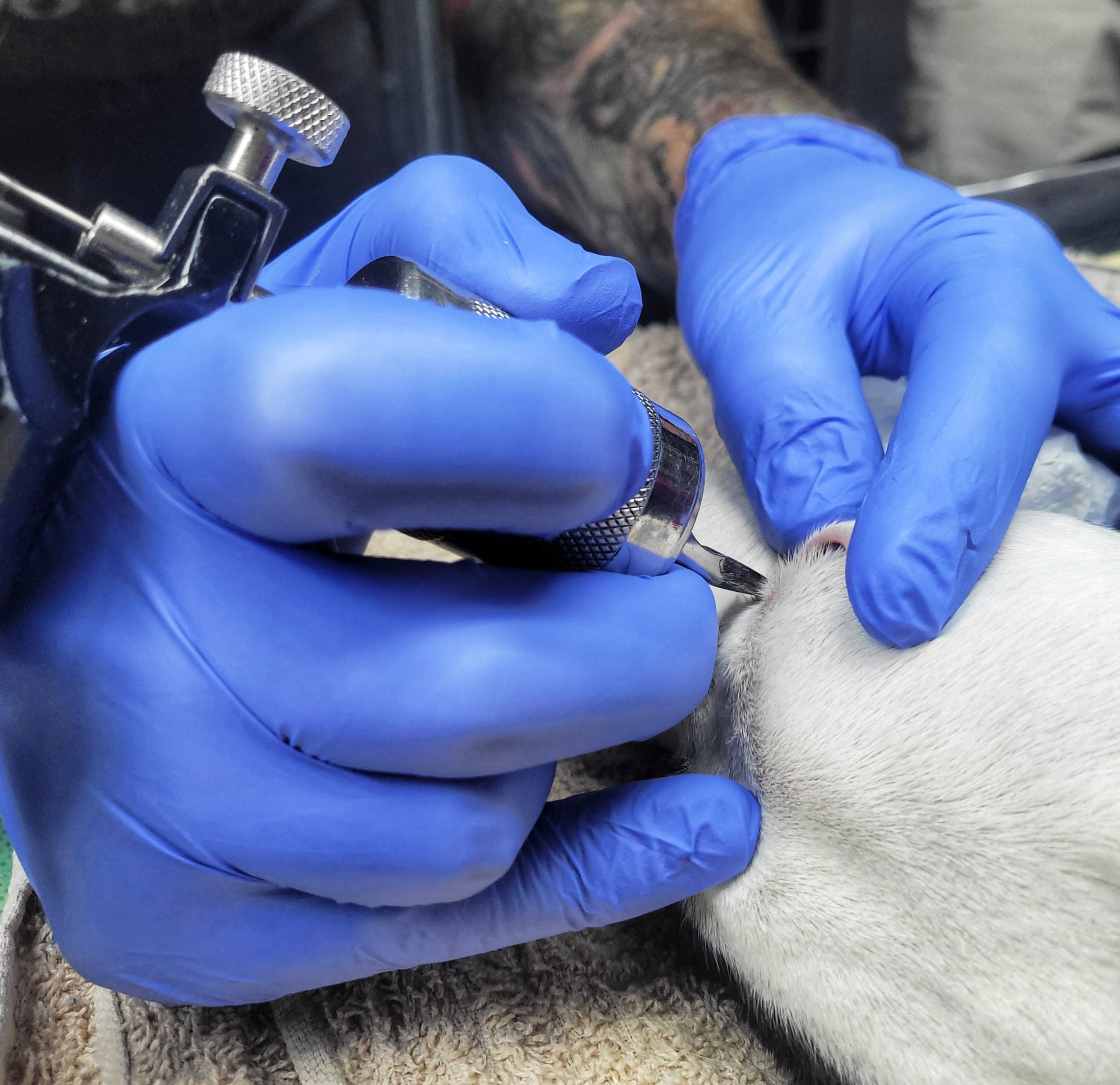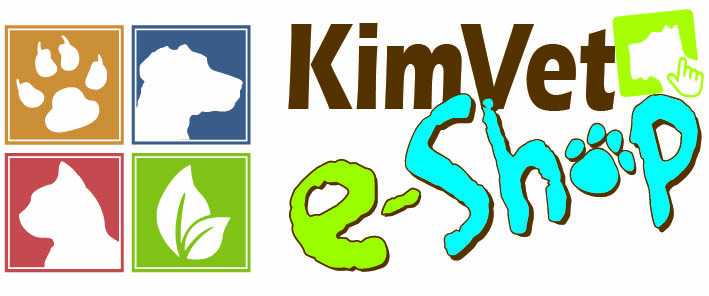
Why Are Vultures So Important?
What would happen to the world if vultures went extinct?
The short answer – Chaos.
Vultures play an invaluable part within our fragile ecosystem. They are one of the world’s most efficient clean-up crews.
Their value has been widely underestimated and is largely unappreciated.
The disastrous decline of vulture populations in Africa and Asia has caused alarm. It is feared the devastating loss will lead to the spread of deadly old and new diseases, including plague, anthrax, and rabies.
In reality, vultures serve us in ways that we are just beginning to understand. One being their remarkable hand in keeping ecosystems and pathogens in check.
A real-life example of this is India, where vultures had been driven to the brink of extinction. It ranked as one of the worst wildlife die-offs in history, caused by humans.
The rapid decline in the vulture population directly impacted the well-being of the country’s human population. It led to the spread of zoonotic diseases and an increased incidence of rabies.
It is said that between the years of 1993 and 2006, this massive vulture loss caused not only major economic losses, but the deaths of around 50 000 humans.
Another major threat is malicious poisoning.
Vultures are poisoned and hacked to pieces for traditional medicine and trade. They are stolen from their environment and traded as if they are dispensable.
In the most rural areas of South Africa, a large proportion of the humans are reliant on nature to provide most of their basic needs. Due to their heavy dependence on nature, local communities benefit hugely from the role of Vultures to protect them.
Agriculture and Wildlife Reserves also benefit from the vulture clean-up crew.
If you come across an injured vulture, please don’t kill it. Phone a veterinary clinic, phone the Endangered Wildlife Trust or phone park rangers or Nature Conservation. And if you cannot help them, at least don’t harm them.
These birds are too valuable to lose to human greed and misinformation.
Want to know more about vultures?
Check out these fantastic websites:
- https://ewt.org.za/what-we-do/saving-species/vultures/
- https://www.telegraph.co.uk/global-health/science-and-disease/why-should-worried-vulture-apocalypse/
- https://www.wildlifecenter.org/vulture-facts
- https://www.smithsonianmag.com/smart-news/african-vultures-are-going-extinct-180957117/
- https://www.wildlifeact.com/blog/why-are-vultures-so-important-to-humans-and-the-environment/

Veterinary Waiting Room Etiquette
Veterinary waiting room etiquette is not unlike our human medical professional counterparts’ waiting area.
The waiting area of any hospital is a hectic place. Practicing good veterinary waiting room etiquette is vital to protect all pets visiting our clinic, as well as their owners.
Here are a few rules when waiting in our veterinary clinic waiting room:
- Keep your dog on a fixed leash.
(Not a flexi-/retractable leash.) This is vital to ensure that your dog always remains close to you. Your dog may be friendly, but there may be other pets who are not.
- Bring, and keep, your cat in a cat carrier. We cannot stress this enough. Not only is your pet a major flight risk from your car to our front door, they are also stressed and may react by scratching and biting you or others, no matter how calm your cat is at home.
- Keep your pet away from other pets in the waiting room. Not all pets are comfortable with interacting, some have contagious diseases and others are in pain. Some don’t enjoy other pets being in their personal space and some are aggressive. Be respectful and keep your pet by your side at all times.
- Unless your pet is to be checked for a bladder issue, give your pet the chance to have a toilet stop before entering the clinic. This alleviates stress and eases handling. If your pet has a urinary tract problem, then please DO NOT allow them a potty break before the consultation as the urine needs to be collected and examined.
- Be honest when communicating your pet’s needs. Let us know when scheduling the appointment what signs and symptoms your pet has so that we can better prepare for your visit. If your pet is fearful or has behavioural issues, please also let us know ahead of time, this gives us a better idea of how to manage your pet in hospital.
- Keep your children away from other pets. This should go without saying, but it still happens regularly. All pets are highly stressed when they are in a strange place. You don’t know why another pet is at the clinic, so please don’t allow your kids to climb on pets, pull ears or tails, or scream loudly at other pets or in the waiting room. Even the friendliest looking dogs have bad days. Other pets have medical conditions like epilepsy that can be triggered by even the slightest disturbances.
Your children are your responsibility, keep them out of harm’s way by making sure they don’t invade another pet’s space and boundaries. - Lastly, just practice good manners. Just like you will in a human doctor’s waiting room, practising patience and respect for others goes a long way in making everyone’s experience positive and less stressful.
Rest assured, our staff are doing all they can to make your visit less stressful. We cannot do it without you.

Medical Tattooing in Animals
Tattooing in animals has been a controversial topic for a while now.
We recently had the opportunity to be a part of something very cool.
Little Luna, a very sun and fun-loving pup, was born with no pigment around her right eye. This means that her eye and the surrounding eyelid is super sensitive and create an optimal area for UV rays to wreak havoc.
Her owners opted to have her eyelid, and a small area on her nose, tattooed to protect her from the harmful rays.
We can all agree that melanin and ink are not the same. Melanin is a natural skin pigment that accumulates in the basal layer of the epidermis of the skin. (The deepest most part of the epidermis)
These pigments act as light catchers and serve as direct free-radical scavengers. In the same way, black ink is known to absorb all visible light, and could possibly also absorb UV rays. In this way, it could protect the skin against UV damage. This was studied a few times in horses as well as mice There are also thousands of real-life examples of this phenomenon seen in pets around the globe.
UVA and UVB Rays:
UVA and UVB are main contributors to skin damage when no or reduced pigmentation is seen. Normally pigmented eyelids have melanin-containing cells. Looking at pets, when there is reduced melanin in the skin or eyelid, the UV rays may harm these cells. This results in blood vessels in the deeper skin layers dilate turning the eyelids red and causing intense inflammation and severe irritation and discomfort. When eyelids and other periocular tissues are affected, it’s called solar blepharitis.
Skin Cancer in Pets:
To fully understand what we are trying to achieve by means of tattooing the eyelids or nose, one needs to understand the mechanism of action of skin cancer and, in the case of pets, primarily squamous cell carcinoma (SCC). Plainly, the UV rays damage the DNA and in turn disrupts the normal function and patterns of the DNA, causing mutated cells, leading to cancer.
In pets, pre-cancerous cells are actually formed when they are young, and only later evidence of SCC is seen when there has been continued sun exposure.
SCC happens in three stages, the first being the initial irritation/inflammation of the skin. Reducing the intense irritation of the lid and the surrounding structures is what we aim to achieve.
A human example of decreasing “glare” and irritation would be sportsman with black lines under their eyes during sports matches. The “eye black grease” is thought to reduce the glare from the interfering light better than their natural skin tone.
Limiting Sun exposure/Preventing UV Related Complications:
There are very few preventative measures pet owners can take to prevent SCC or related problems when it comes to sun exposure. One being sunscreen, which is very difficult to maintain with pets and another being limiting exposure to the sun. Taking into account that we reside in South Africa, a very sunny country, this means keeping lighter pets indoors for the majority of the day. Sometimes this is just not possible, and the frustration felt by the pet by being cooped up can also serve as a platform for other behavioural issues to take hold. Tattooing of non-pigmented areas that are prone to developing SCC is, at this stage, one of the only more permanent ways veterinarians can assist these pets.
Why We Recommend Tattooing Of Unpigmented Areas In Pets:
It is true that reports from 2010 and 2012 indicated that there is no current definitive evidence to show that the ink itself absorbs or protects against UV damage. The Danish study of 2015 is the most encouraging. It concluded that there is strong indication of the protective effect of black pigment in the dermis attributed to UVR absorption. Thereby reducing backscattered radiation that seems to assist in reducing the extent of skin cancer formation.
Based on this recent knowledge, prophylactic tattooing of the more sensitive areas around the eyes and nose is considered medically beneficial. We acknowledge that no further current research information is available, and we are aware that no known studies have been conducted in dogs and cats. We will constantly be on the lookout for newer research and amend our approach should it be deemed medically significant.
At this stage, the benefits greatly outweigh the risks. If nothing else, reducing the glare and pain associated with the severe irritation of very sensitive eyes and noses is enough reason to condone medical tattooing as veterinary professionals. Therefor it is not considered purely cosmetic.
Disclaimer:
We would like to reiterate again that patients undergoing the procedure will be consulted by our veterinarians. These patients will need to be deemed at high enough risk to warrant tattooing. We do not condone tattooing of animals for purely cosmetic reasons. Kimberley Veterinary Clinic also does not claim that tattooing prevents pets getting cancer.
If you would like a more in detailed explanation, feel free to visit the Johannesburg Animal Eye Hospital website (https://animaleyehospital.co.za/Tattooing/). Most of our own research and facts stem from their own detailed description of the different processes. They are veterinary eye specialists and also advocate for medical tattooing of predisposed pets. They also cite the research articles referenced within their own post.
Luna’s Procedure:
Luna’s procedure was done ethically and under highly controlled circumstances and not for cosmetic purposes.|
Leon, from VanCustoms – Tattoo’s and Body Piercings, performed the tattooing procedure. He has extensive experience tattooing humans and pets alike, and the procedure was expertly done!
Luna was put under anaesthesia for the entirety of the procedure and received appropriate home care.
Check out our Facebook post for Luna’s Before and After reveal 11 days post-procedure: https://www.facebook.com/KimberleyVeterinaryClinic/post/pfbid033eGhUiwixarf2iGiJEhQ8urg6B1vBGk2jUYpFEXWfwA7YG6LrhZZDZYfuwTMQqahl
We do not condone or promote tattooing of animals for cosmetic purposes. This procedure must be done by trained professionals and under direct veterinary supervision as anaesthesia and proper analgesia are required.
If you would like to know more about having your pets tattooed for medical reasons, please contact VanCustoms directly.
https://m.facebook.com/VanCustomstattoos?eav=Afasb-dpxrENYpptz3DWtQmD_VnoAUGzV0Q4F8ordvbgEGc5N_sF-e4KItRsoP5CDgk&paipv=0&_rdr
Research Papers/Articles:
- https://pubmed.ncbi.nlm.nih.gov/26018407/
- https://onlinelibrary.wiley.com/doi/10.1111/j.1600-0625.2010.01068.x
- https://www.google.com/url?sa=t&rct=j&q=&esrc=s&source=web&cd=&ved=2ahUKEwiXpvzW8YmDAxVmgf0HHf_ACDIQFnoECAgQAQ&url=https%3A%2F%2Fepub.uni-regensburg.de%2F23795%2F1%2FDissertation_Lehner_endg.pdf&usg=AOvVaw3crauSTz5DW-NFPnhdsHTX&opi=89978449
- https://www.sciencedirect.com/science/article/abs/pii/S0737080608004310
Veterinary Nurses Day 2023
It’s Vet Nurses Day!
Here’s to all the amazing veterinary nurses and technicians all around the world putting their patients, your pets, first every single day.
Thank you!




